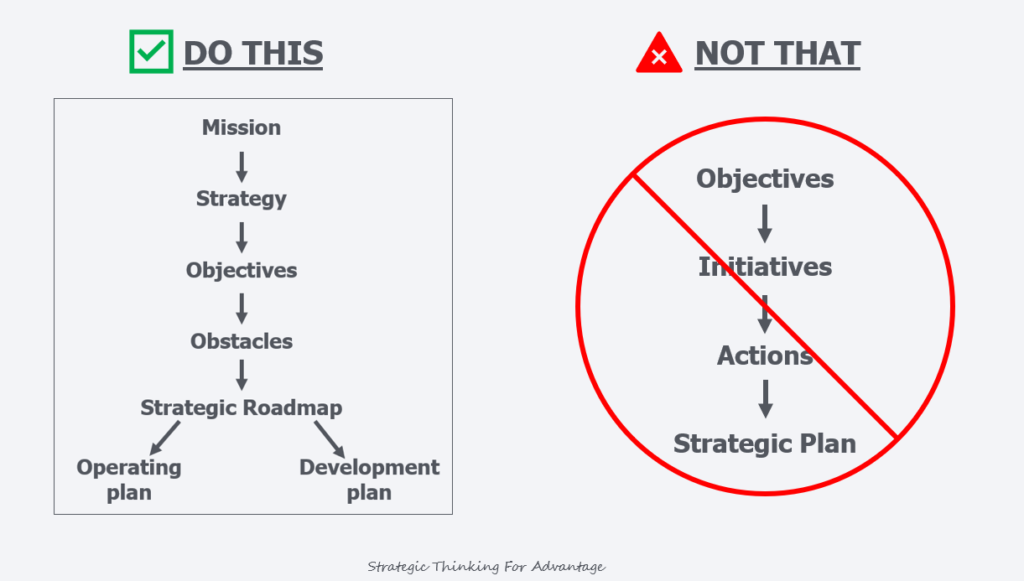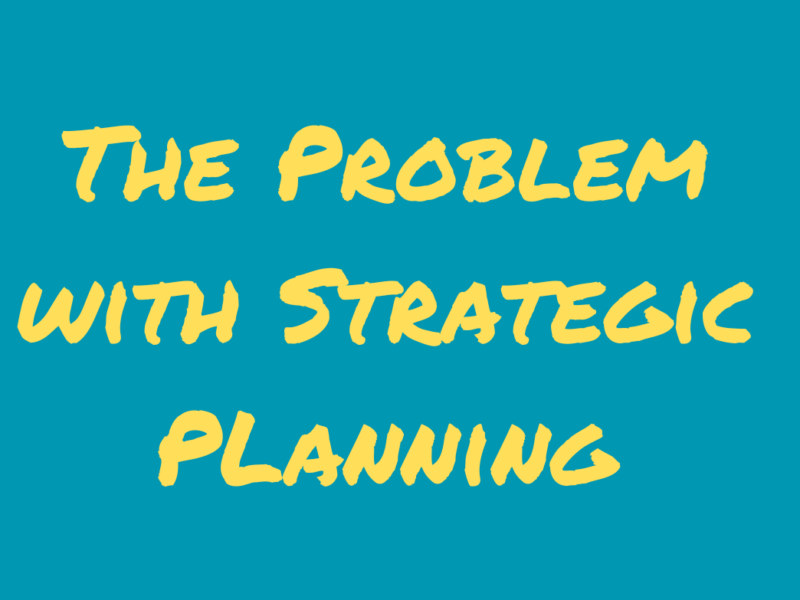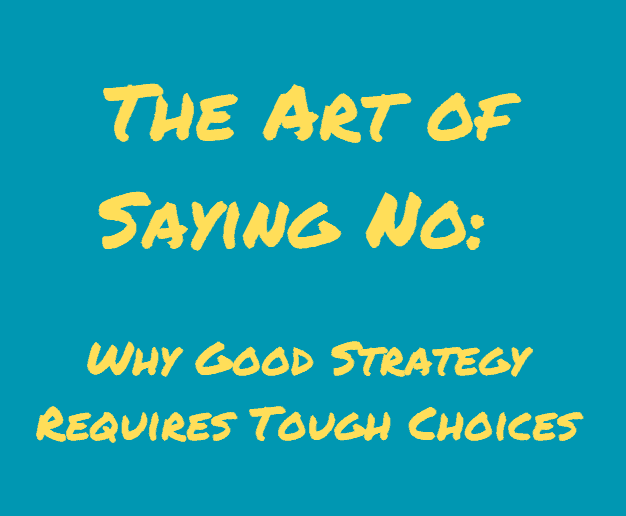Life often resembles a tragic-comedy, especially when we cling to antiquated rituals we all recognize as ineffective.
Even though we readily admit their flaws, these ancient rituals can become deeply ingrained in the status quo. We repeat them without question, as if adhering to the old showbiz saying, “the show must go on.”
The ancient ritual under scrutiny in this edition of the Luck Hacker newsletter is commonly called “strategic planning.”
It’s a process that took the business world by storm sometime during the late 1960s and 70s in reaction to a wave of strategy thinking promoted by consulting firms like the Boston Consulting Group and academic work at Harvard.
Before this newfangled strategy thing, businesses were administered.
Guidance was formulated and distributed via policies crafted at the top and cascaded down through the hierarchy to be implemented.
Back then, strategy was the avant-garde buzzword, akin to today’s hype about AI.
It was new. It was shiny. It made you sound smart.
It was the emblem of sophistication and status elevation.
But as demand for strategy surged, it was inevitably diluted and commoditized, transforming from a craft into a “paint-by-numbers” activity.
Firms did the quick and easy thing to lay claim to “having a strategy.” They rebranded their annual operating plans and started calling them strategic plans.
And while it makes sense for an operating plan to be guided by strategy, there’s a huge problem with strategic planning.
And it’s not a secret. CEOs and chief strategy officers routinely complain about it.
Strategic planning is just not very strategic.
It does not produce the kind of strategic thinking, the kind of strategy, that you’d like to see coming out of an organization.
A result that comes from too much planning and not enough strategy.
The essence of strategy—crafting unique choices, anticipating future opportunities, and creating advantages—tends to be overshadowed by the minutiae of planning.
Planning is a management act, intent on control; strategy is a leadership act, providing direction. Yet, the prevalence of management over leadership in corporations means that strategic thinking is often neglected.
Mashing the strategy and planning together into a “strategic planning” process is a surefire way to short-change the hard strategic thinking needed to develop a good strategy.
It’s simple human thermodynamics in action – we tend to do what’s easier for us to do.
There is a better way. And if you can navigate the political difficulties of change, it’s pretty simple to do.
Simply separate strategy development from planning. Make them two separate but linked processes.
That way, you can do strategy right and generate a better strategy.
This diagram shows a reframing of the process.

It starts with the mission – what is it that the firm is trying to do, the change being imparted on the world, and the reason people show up to work.
Strategy comes next. Your strategy should reflect the unique choices you make about markets, customers, products, positioning, capabilities needed, etc.
From there, strategic objectives or milestones should become much clearer.
Naturally, there will be obstacles (both things we must overcome and things we are missing) to realizing these milestones. Make an inventory.
Translate these milestones and obstacles into a map. Maps make planning much more straightforward.
Then you can plan.
My recommendation is to separate out the operating plan (running the company) from the development plan (building the future company), but you do it any way that works for you.
The process does not end here. Communication, measures, and lots of management will still be required to enact the plans you develop.
But with better strategy and better maps, your plans will be more focused and execution more straightforward.
By unbundling strategic planning in this way, you will generate plans that are much more strategic in nature and have much better outcomes.

 The 10x Strategy System
The 10x Strategy System